Related Research Articles
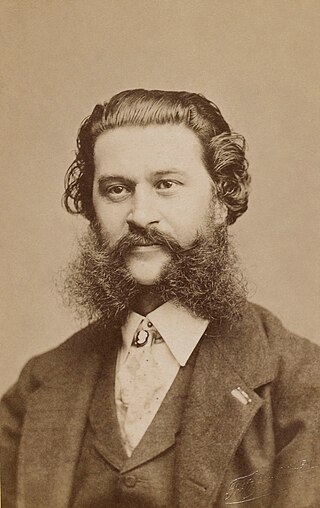
Johann Baptist Strauss II, also known as Johann Strauss Jr., the Younger or the Son, was an Austrian composer of light music, particularly dance music and operettas as well as a violinist. He composed over 500 waltzes, polkas, quadrilles, and other types of dance music, as well as several operettas and a ballet. In his lifetime, he was known as "The Waltz King", and was largely responsible for the popularity of the waltz in Vienna during the 19th century. Some of Johann Strauss's most famous works include "The Blue Danube", "Kaiser-Walzer", "Tales from the Vienna Woods", "Frühlingsstimmen", and the "Tritsch-Tratsch-Polka". Among his operettas, Die Fledermaus and Der Zigeunerbaron are the best known.
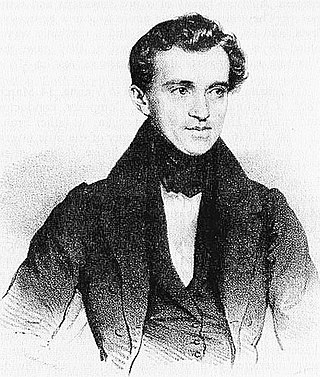
Johann Baptist Strauss I, also known as Johann Strauss Sr., the Elder or the Father, was an Austrian composer of the Romantic Period. He was famous for his light music, namely waltzes, polkas, and galops, which he popularized alongside Joseph Lanner, thereby setting the foundations for his sons—Johann, Josef and Eduard—to carry on his musical dynasty. He is best known for his composition of the Radetzky March.
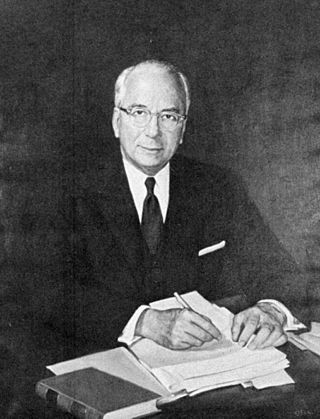
Lewis Lichtenstein Strauss was an American government official, businessman, philanthropist, and naval officer. He was one of the original members of the U.S. Atomic Energy Commission (AEC) in 1946, and he served as the commission's chairman in the 1950s. Strauss was a major figure in the development of nuclear weapons after World War II, nuclear energy policy, and nuclear power in the United States.
Accelerationen (Accelerations), op. 234, is a waltz composed by Johann Strauss II in 1860 for the Engineering Students' Ball at the Sofienbad-Saal in Vienna. It is one of his best-known waltzes, famous especially for its rapidly accelerating opening waltz theme.
Mephistos Höllenrufe, Op. 101, is a waltz composed by Johann Strauss II in 1851. It was first performed at the Vienna Volksgarten as part of a festival preceding Strauss' departure for a tour of Germany. The title of the composition is a quotation from the Bible: "And the devil [Mephistopheles] [...] was cast into the lake of fire and brimstone, where the beast and the false prophet are, and shall be tormented day and night for ever and ever". A reporter for the Wiener Allgemeine Theaterzeitung commented on Strauss' waltz that it "received such a favourable reception, on account of its effective and original melodies and brilliant instrumentation, that it had to be repeated three times". Especially colourful, and keeping with the work's ominous title, is the second waltz theme: its cheerful, ascending tune is suddenly interrupted, and then answered by a sinister chromatic descending passage. Some of the waltz themes of the work are found in close proximity to one another in the earliest of Strauss' "sketchbooks", and were probably written in the first half of 1851.
Grillenbanner, opus 247, is a waltz composed by Johann Strauss II. Strauss himself conducted its premiere at a ball in the Sofienbad-Saal in February 1861. The work was dedicated to Prince Leopold of Saxe-Coburg-Gotha.
Du und Du, opus 367, is a waltz by Johann Strauss II composed in 1874. It derives from themes from his Die Fledermaus, the famous operetta, and its title and opening melody specifically from the Du-i-Du chorus of Brüderlein, Brüderlein und Schwesterlein in Act II.
Phänomene (Phenomena), opus 193, is a waltz composed by Johann Strauss II. The waltz was dedicated to the technical students of the Vienna University, and was first performed on the occasion of their ball in the Sofienbad-Saal in February 1857. This composition belongs to the series of Strauss waltzes which reflect the composer's fascination for avant-garde orchestrations and harmonic styles of Hector Berlioz and Richard Wagner.
Lob der Frauen, Op. 315, is a polka-mazurka composed by Johann Strauss II. The composition was first performed at the Vienna Volksgarten at the 1867 Carnival in Vienna. The work was performed alongside other compositions that Strauss had written around that period, including the famous waltzes Blue Danube and Artist's Life.
The Neue Pizzicato-Polka, or New Pizzicato Polka, Op. 449, was composed by Johann Strauss II in early 1892 for concerts to be given under Eduard Strauss in Hamburg. Strauss later placed the work as a ballet between the second and third acts of his operetta Fürstin Ninetta. It is scored as its name implies for plucked strings.
Bitte schön!, opus 372, is a polka composed by Johann Strauss II. The first two themes of the composition incorporate Strauss' operetta Cagliostro in Wien. The composition was first performed in the summer of 1872.
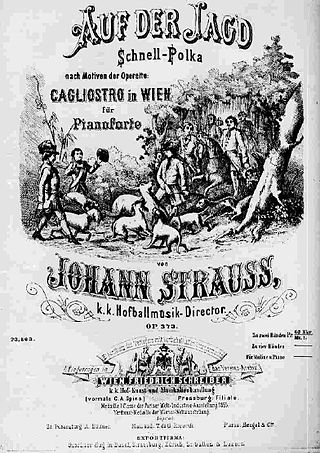
"Auf der Jagd", op. 373, is a polka composed by Johann Strauss II. The composition is based on melodies in Strauss' operetta Cagliostro in Wien.
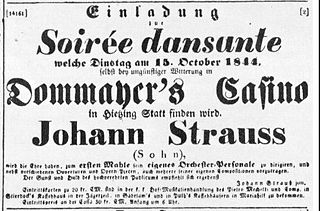
Gunstwerber, Op. 4, is a waltz by Johann Strauss II.

Herzenslust, Op. 3, is a polka composed by Johann Strauss II in the fall of 1844 for his debut as a composer at the Dommayer's Casino establishment in Vienna. It was performed along with several of Strauss' other early compositions, such as the waltzes Sinngedichte and Gunstwerber, and the Debut-Quadrille. Reviewing Strauss' debut, the journal Der Wanderer noted that both the Debut-Quadrille and the Herzenslust Polka "are so piquant in their inspiration, and handled with such glittering effect in the instrumentation that we […] have to recognise and commend the bold and exuberant talent of Strauss Son."

Sinngedichte, Op. 1, is a waltz composed by Johann Strauss II in 1844 for his debut as a composer at Dommayer's Casino in Vienna. The waltz was played along with several other compositions that Strauss had written for the occasion, such as the waltz Gunstwerber and the polka Herzenslust. The waltz was an unprecedented success when first performed, and had to be repeated a record nineteen times.

Debut-Quadrille, Op. 2, is a quadrille composed by Johann Strauss II. It was one of four compositions that Strauss had written for his début as a composer at the Dommayer's Casino in Hietzing, Vienna in the fall of 1844. The composition is in standard Viennese quadrille form, with six sections, named: No. 1 Pantalon; No. 2 Été; No. 3 Poule; No. 4 Trénis; No. 5 Pastourelle; No. 6 Finale.
Aus den Bergen, opus 292, is the name of a waltz composed by Johann Strauss II. The work was first performed in Pavlovsk on October 2, 1864, under the title In den Bergen. The composition was dedicated to the music critic Eduard Hanslick. Critics commented on Strauss' waltz that "after a long time a new waltz from Johann Strauss has appeared, which is distinguished by noble and graceful character, and further distinguished by extraordinarily masterful instrumentation." The first Viennese performance of the waltz was in the Volksgarten as part of a benefit concert commemorating Strauss' twentieth anniversary of his debut as a composer.
Waldine, Op. 385, is a polka-mazurka composed by Johann Strauss II. The title is taken from one of Strauss' operettas, Blindekuh. Waldine was the last, as well as the least successful, of the five orchestral dance compositions that Strauss had arranged on tunes from the operetta, having been first performed an entire year after the premiere of the operetta, where it was conducted by Eduard Strauss in the Musikverein in Vienna on December 7, 1879.

The Strauss Family is a 1972 British Associated Television series of eight episodes, about the family of composers of that name, including Johann Strauss I and his sons Johann Strauss II, Eduard Strauss and Josef Strauss.
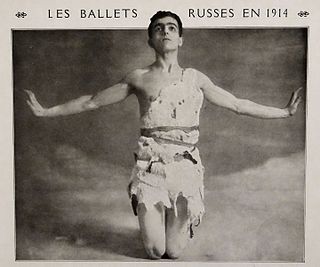
Josephslegende, Op. 63, is a ballet in one act for the Ballets Russes based on the story of Potiphar's Wife, with a libretto by Hugo von Hofmannsthal and Harry Graf Kessler and music by Richard Strauss. Composed in 1912–14, it premiered at the Paris Opera on 14 May 1914.
References
- ↑ "STRAUSS II, J.: Edition - Vol. 14 CD". NaxosDirect. Archived from the original on 2011-07-14. Retrieved 2008-10-09.